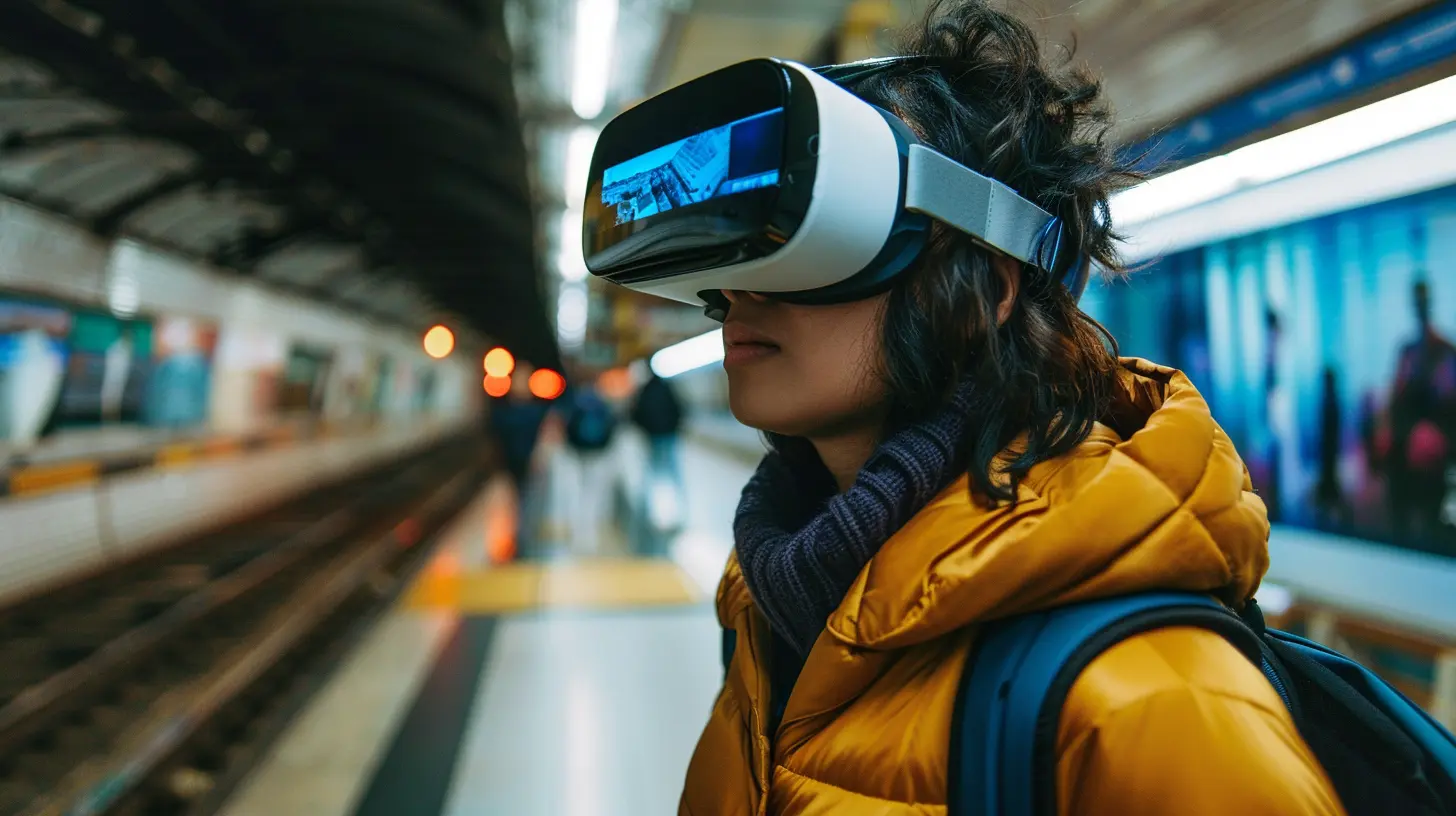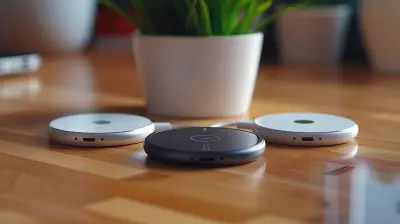How Wearable Tech is Making Commuting Smarter and More Efficient
8 October 2025
Let’s face it—commuting isn’t exactly the highlight of anyone’s day. Whether you’re hustling to catch the subway, sitting in endless traffic, or weaving through a sea of cyclists, the daily grind can be a real pain. But here’s the good news: wearable tech is stepping in to make our commutes a whole lot smarter—and dare we say—more enjoyable.
In this deep dive, we’re going to explore how wearable technology is revolutionizing the way we travel. From optimizing routes to improving safety, boosting productivity, and even tracking our health while we commute, these gadgets are becoming invisible co-pilots that help us navigate the chaos of modern transportation.

What Exactly is Wearable Tech?
Before we dig into the benefits, let’s get clear on what we mean by wearable tech. In simple terms, it’s technology you wear on your body—like smartwatches, fitness trackers, smart glasses, or even connected clothing. These devices collect data, connect to your smartphone or other devices, and can perform a wide range of tasks that help make your life easier and more connected.Now, when we apply that to commuting? That’s where the magic happens.

Real-Time Navigation and Route Optimization
Let’s be honest. GPS apps on our phones are great, but who wants to pull out their phone every five minutes while biking or walking? This is where wearable tech comes in strong.- Smartwatches and Smart Glasses: Devices like the Apple Watch or Google Glass can provide turn-by-turn directions right in your line of sight or with a tiny vibration on your wrist. That means no more stopping mid-walk or trying to juggle your phone and steering wheel on your way to work.
- Haptic Feedback: Some smart wearables use subtle vibrations to guide you—turn left? Two small buzzes. Turn right? Three. It’s like having your own digital guide giving you gentle nudges in the right direction.
This becomes a game-changer for cyclists and pedestrians, allowing them to stay focused on their surroundings without having to stop every few blocks to check directions.

Making Public Transportation Smarter
Ever sprinted to a bus stop only to watch your ride roll away? Yep, us too.Wearables connected to public transport apps can send real-time alerts, updates, and reminders straight to your wrist. That means you can:
- Get notified if your train is delayed
- Receive reminders about when to leave based on your usual transit time
- Automatically adjust your schedule thanks to synced calendar and route data
Even better? Some smartwatches allow you to tap and pay for public transport, so you don’t have to fumble for a card or ticket. That’s a small win, but those seconds add up during a packed rush hour.

Enhancing Safety on the Move
Commuting in busy cities can feel like walking through a pinball machine—cars, bikes, scooters, and people all darting in different directions. Wearable tech can be your safety net in the middle of all that chaos.For Cyclists and E-Scooter Riders
- Smart Helmets: Helmets with built-in lights, turn signals, and even rear-view cameras are already on the market. Some even have crash detection and can alert emergency contacts if something goes wrong.- Fitness Trackers: Devices like Fitbit or Garmin can detect sudden movement or hard falls and send alerts to emergency services.
- Smart Backpacks or Jackets: Some clothing now comes embedded with lights and indicators to make cyclists more visible in low light.
For Pedestrians
- Noise-Cancelling Earbuds with Awareness Modes: Let’s be honest—we all walk around with earbuds jammed in. Smart earbuds that allow ambient noise (like car horns or train announcements) can prevent you from zoning out dangerously.These safety-focused features don’t just protect you; they increase awareness and reduce accidents overall.
Commuting Health Benefits: Tracking While Traveling
Most of us sit way more than we should—especially if we drive or take the train to work. But wearable tech gives you a new way to sneak health benefits into your commute.- Step Counting and Active Minutes: Your wearable can nudge you to walk a train stop further, take the stairs, or ride your bike to work.
- Heart Rate Monitoring: If your commute is a source of stress (we’ve all been there), your device can help track your heart rate and suggest when it's time for a calming breath.
- Posture Correction: Sitting on a jam-packed subway hunched over your phone? Yep, we’ve all got “commuter slouch.” Some wearables remind you to sit up straight or move around.
It’s a subtle reminder that your commute doesn’t have to be wasted time—it can actually be an opportunity to squeeze in some wellness.
Boosting Productivity on the Go
Time is money, right? Wearable tech helps you reclaim some of that lost commuting time and turn it into something more productive.- Voice Assistants: Smartwatches and earbuds integrated with AI assistants (like Siri, Google Assistant, or Alexa) make it easy to dictate emails, set reminders, or check your calendar, all hands-free.
- Text and Email Notifications: Get important messages at a glance without diving into your phone and losing focus—or worse, missing your stop.
- App Integration: Your wearable can sync with productivity apps like Evernote, Trello, Slack, and more. Quick task management without pulling out a laptop? Yes, please.
When you add up the time saved in those little moments, you start to realize how much more efficient commuting can really be.
Smarter Commuting for All: Accessibility and Inclusivity
Perhaps one of the coolest things about wearable tech is how it’s opening doors for accessibility.- Navigation for the Visually Impaired: Devices like smart glasses or haptic wearables help visually impaired commuters navigate more safely.
- Speech-to-Text and Alerts for the Hearing Impaired: Smartwatches can turn spoken announcements from buses or trains into real-time readable alerts.
- Fall Detection for Elderly Commuters: This is a big one. Wearables that detect falls and automatically send emergency help can be lifesaving.
These technologies aren’t just quality-of-life improvements—they’re making commuting accessible to more people than ever before.
Emerging Trends: The Future of Wearable Commuting
So, where’s all this going? Great question. Here's a peek into where wearable commuting tech is headed:AI-Driven Smart Wearables
Imagine a smartwatch that knows your patterns, anticipates your morning rush, and tells you to leave five minutes early because of that surprise construction on your route. AI is bringing that future closer every day.Integration with Smart Cities
Wearables will soon work in tandem with smart infrastructure—so your watch might communicate with traffic signals, enabling smoother, safer crossings, or suggest alternate routes based on pedestrian crowd density.Biometric-Powered Personalized Transport
Think wearables that adjust your commuting environment—like car seat settings, music preferences, or air conditioning levels—based on your heart rate or mood. Commutes could get truly personal.The Not-So-Rosy Side: Privacy and Battery Life Concerns
Alright, let’s keep it real. Wearable tech is amazing, but it’s not perfect.- Privacy: These devices collect a ton of data—location, health metrics, payment info, and more. That’s a goldmine for hackers if not handled right.
- Battery Life: The more your wearable does, the faster it drains. No one wants their smartwatch to die halfway through a hectic commute.
These challenges aren’t deal-breakers, but they’re worth keeping in mind as you decide what gear works best for you.
Final Thoughts: You're the Pilot of Your Commute
We've come a long way from just groaning through traffic jams. Today, wearable tech gives you the tools to steer your commute—rather than just survive it. Whether it’s helping you stay safe, alert, fit, or just showing up on time, these gadgets are transforming the way we get from point A to point B.Will wearable tech completely eliminate the stress of commuting? Probably not. But it sure makes it a whole lot smarter, smoother, and efficient. Why not give it a try and upgrade your daily grind?
all images in this post were generated using AI tools
Category:
Wearable DevicesAuthor:

Michael Robinson
Discussion
rate this article
1 comments
Evangeline McMaster
This article insightfully highlights how wearable technology is revolutionizing commuting by enhancing real-time tracking, optimizing routes, and improving overall efficiency. As wearables integrate seamlessly with our daily routines, they not only streamline transport but also contribute to a more sustainable future in mobility.
October 8, 2025 at 10:48 AM

Michael Robinson
Thank you for your thoughtful comment! I'm glad you found the article insightful. Wearable technology indeed plays a crucial role in transforming commuting and fostering sustainability.


